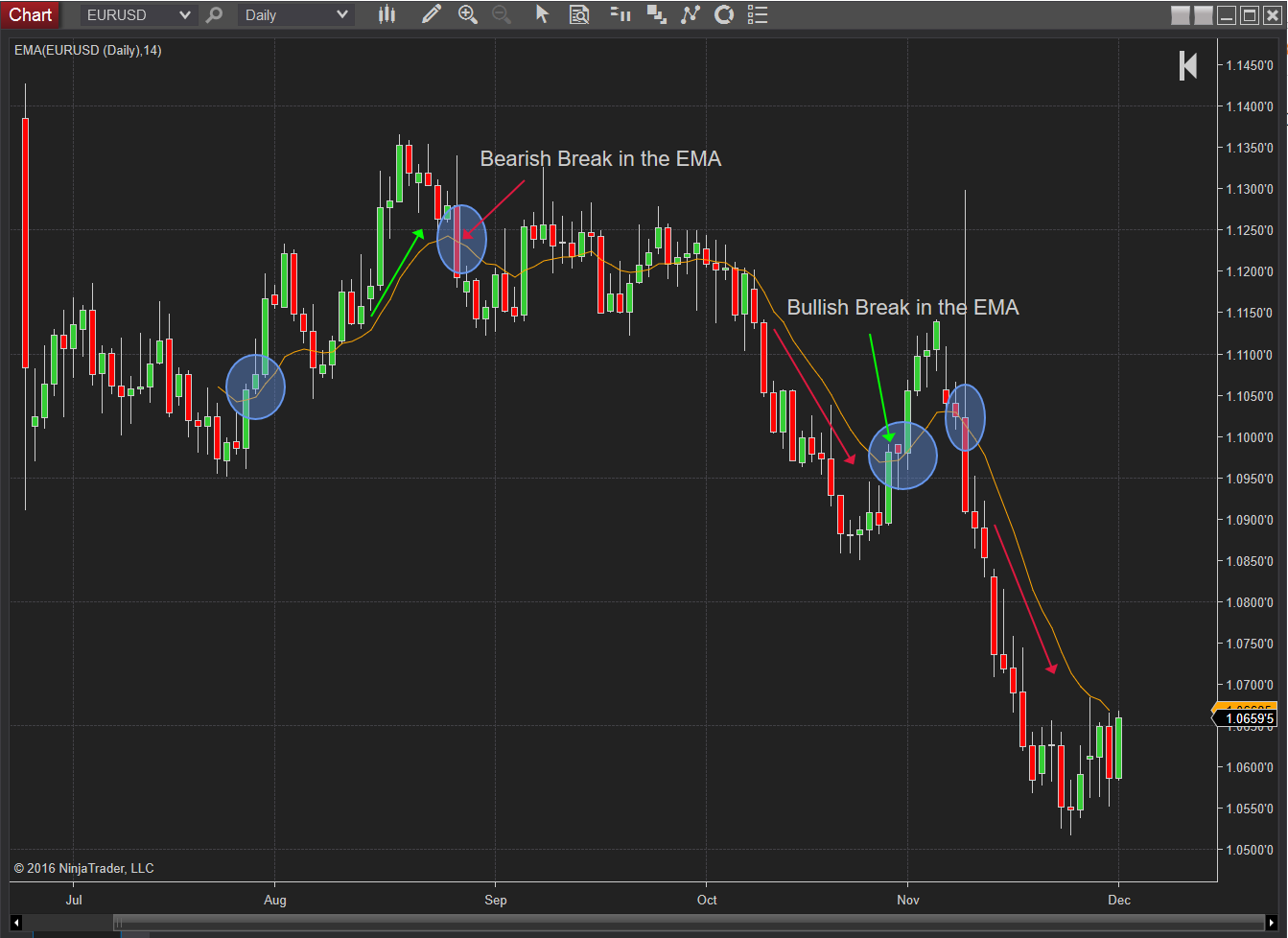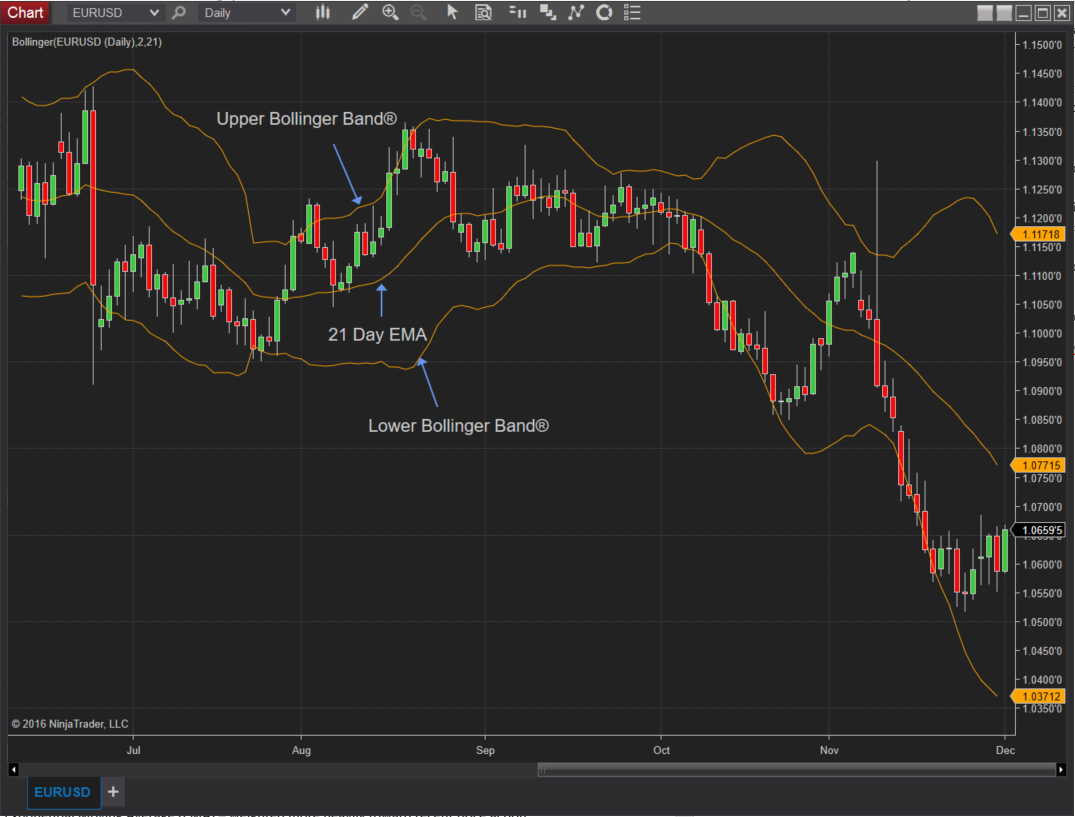Exponential moving averages (EMA) are designed to analyze financial instruments’ price movement. The difference between EMAs and other moving averages is that EMA’s apply a higher value to more recent data points. For example, a 14 day EMA will value the most recent 5 days more than the least recent 5 days of data.
Below, you can see a 14 day EMA over the EUR|USD on a foreign currency trading chart:

Futures Trading a Bullish Buy Signal Using an Exponential Moving Average
When the price action of a financial instrument convincingly breaches an exponential moving average during a bearish trend, a bullish trend reversal may occur in the near future. A bullish breach of the EMA can also be looked at as a potential buy signal. Once the trend is breached for a second consecutive time, but to the downside, it could be identified as an exit or sell signal.
Trading a Bearish Sell Signal Using an Exponential Moving Average
When the price action of a financial instrument convincingly breaches an exponential moving average during a bullish trend, a bearish trend reversal may occur in the near future. A bearish breach of the EMA can also be looked at as a potential sell signal. Once the trend is breached for a second consecutive time, but to the upside, it could be identified as an entry or buy signal.
How EMAs Are Used with Other Technical Indicators
Exponential moving averages can also be used in tandem with other technical indicators such as Bollinger Bands®. The most common exponential moving average used with Bollinger Bands® is a 21 day EMA. The 21 day EMA is surrounded by the upper and lower band in order to provide a reference point of past and present price action.
Additionally, the 21 day EMA is used as a technical trading indicator of future price action. If the Bollinger Bands® tighten around the EMA, this could be identified as a low volatility period with a potential price move likely in the near future. If the Bollinger Bands® loosen around the EMA, this could be identified as a high volatility period with a potential price move not likely in the near future.
Looking at the EUR|USD chart below, the 21 Day EMA is located between the upper and lower Bollinger Band®:

Ready to get started backtesting your strategy with exponential moving averages on NinjaTrader’s free trading simulator & live market data? Download Now and register for a free futures data trial to start exploring the markets!

